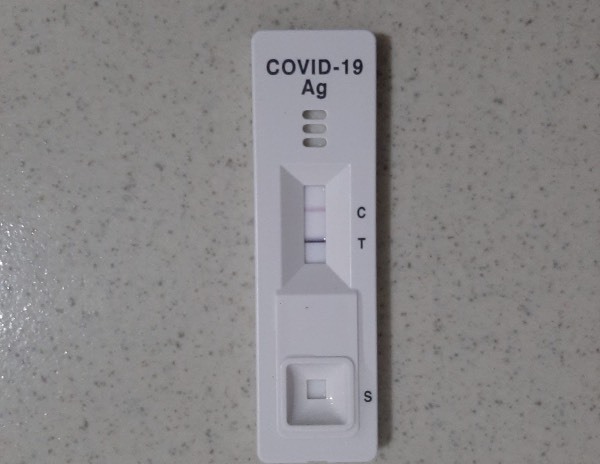Passing more than 1,000km to “change” lives
The heart is twice the size of a normal person, the dilated aorta can burst at any time, severe heart failure, Mr. Nay Suih was transferred from Gia Lai to Hanoi for surgery.
Death at any time
Mr. Nay Suih, 43 years old, is one of 4 difficult cases that Gia Lai Provincial General Hospital asked for consultation in the periodical Telehealth telehealth program of Hanoi Heart Hospital in early May.
The patient was diagnosed with the disease 4 years ago, but in difficult circumstances, he only received medical treatment, without intervention. His condition was getting worse and worse, the medicine was no longer effective, and he had to be hospitalized.
After the remote consultation, the doctors decided to take the patient from Gia Lai to Hanoi Heart Hospital for treatment.
On May 14, the doctors of the Intensive Care Unit, Hanoi Heart Hospital welcomed patient Nay Suih with a very serious condition, a complicated disease when at the same time had an ascending aortic aneurysm – aortic valve regurgitation. – Marfan syndrome and heart failure.
 |
| Doctors at Hanoi Heart Hospital performed surgery on patient Nay Suih |
Assoc. Prof. Dr. Nguyen Sinh Hien, Director of Hanoi Heart Hospital, said that the patient’s condition was very serious, and death was very close because of Marfan syndrome. Patients with complications of heart failure and type A aortic dissection, need immediate surgery to avoid the risk of rupture.
On May 17, the patient was transferred to the operating room. In 3 hours, the doctors replaced the entire aorta and aortic valve for the patient.
Timely and successful surgery saves the patient’s life. The patient has no postoperative complications and is currently stable.
Tall, thin people, fingers and toes longer than usual, concave chest should be checked
Assoc. Prof. Dr. Nguyen Sinh Hien said, Marfan syndrome is a genetic disorder that causes damage to the heart, blood vessels, lungs, eyes, bones and ligaments.
In most cases, there is an abnormality of the aorta structure, which is caused by a deficiency of some proteins involved in the structure of connective tissue, making the structure of the middle layer of the aorta not tight, leading to dilatation. /aortic dissection, aortic regurgitation. Many cases of infective endocarditis, heart failure…
Statistics show that about 25% of patients with ruptured aortic aneurysm die before reaching the hospital and 51% die in hospital without surgery.
Intraoperative mortality is about 46% (compared with 4-6% for elective surgery), and the 30-day survival rate is about 11%.
The risk of aneurysm rupture increases the larger the aneurysm size. Up to 80% of abdominal aortic aneurysms progress gradually with time, about 15-20% progress rapidly (>0.5cm per year), and the risk of rupture also increases with time.
Experts from the National Heart Institute said that this is not a rare disease, but like many other diseases in our country, when the disease is so severe that it is unbearable, people will go to the hospital. examination and treatment. That makes treatment difficult and in many cases too late.
Symptoms of Marfan syndrome may appear soon after birth, sometimes later, or in some cases never appear. Besides the ape limb shape, the patient also has other skeletal disorders including flat feet, scoliosis, and concave sternum.
Eye symptoms are often nearsightedness, eccentric lens. Cardiovascular symptoms depend on the degree of anatomical abnormalities and include fatigue, dyspnea, palpitations, syncope, or often no symptoms.
If not detected and treated early, in middle age many people have severe cardiovascular complications, possibly death. The most dangerous complication is aneurysm which leads to aortic rupture, blood will flow massively into the abdomen, causing severe anemia in all organs. fast.
There is currently no diagnostic test that can determine whether an unborn child has Marfan syndrome.
Cardiologists recommend that people who are tall, thin, have fingers and toes longer than normal, and have a concave chest should have a comprehensive health check, especially a cardiovascular checkup such as echocardiography, electrocardiogram.
As for tall, well-proportioned people, they should not worry about the risk of Marfan syndrome. However, not all carriers of the gene for this syndrome will develop heart disease, but to best control the disease, all people born into a family with this syndrome, even if there are no abnormalities. Often, heart health should also be checked.
If you carry the disease gene but have normal cardiovascular health, you can still be physically active and play strong sports like other people. When the disease is detected early, properly monitored and treated, it is still possible to lead a normal life.
N. Huyen
at Blogtuan.info – Source: infonet.vietnamnet.vn – Read the original article here



